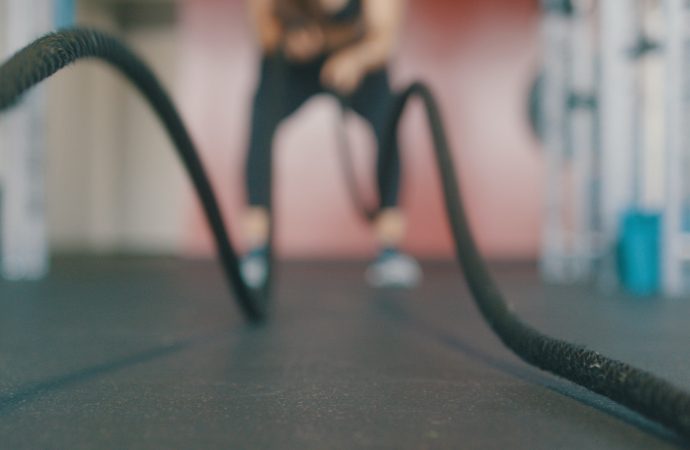Are you tired of the same old cardio routine? Are you looking for a way to maximize your cardiovascular fitness and achieve optimal health? Look no further than HIIT – high-intensity interval training. This type of exercise has been gaining popularity in recent years due to its ability to provide quick, effective results. In this
Are you tired of the same old cardio routine? Are you looking for a way to maximize your cardiovascular fitness and achieve optimal health? Look no further than HIIT – high-intensity interval training. This type of exercise has been gaining popularity in recent years due to its ability to provide quick, effective results. In this blog post, we’ll dive into the science behind HIIT and show you how it can help take your fitness to the next level. Get ready to sweat and feel great with our guide on maximizing your cardiovascular fitness with HIIT!
What is HIIT?
HIIT, or high-intensity interval training, is a type of workout that alternates between short bursts of intense activity and brief periods of rest or lower-intensity activity. HIIT can be performed with any type of activity, but is most commonly done with cardio exercises such as running, biking, or rowing.
The benefits of HIIT are many: it can help improve cardiovascular fitness, increase fat burning, and improve insulin sensitivity. HIIT is also a very time-efficient way to workout; a typical HIIT session may last only 20-30 minutes, including the warm-up and cool-down.
If you’re looking to maximize your cardiovascular fitness, HIIT is a great option. Be sure to consult with your doctor before beginning any new exercise program, especially if you have any health concerns.
The Benefits of HIIT for Cardiovascular Fitness
High-intensity interval training (HIIT) is a type of exercise that alternates between short periods of intense activity and recovery periods. HIIT has been shown to be more effective than traditional forms of cardio for improving cardiovascular fitness.
The benefits of HIIT for cardiovascular fitness include:
1. Increased heart health.
2. Improved blood pressure.
3. Better cholesterol levels.
4. Enhanced fat burning.
5. Greater aerobic capacity.
How to Incorporate HIIT Into Your Workouts
When it comes to cardiovascular fitness, HIIT – or high-intensity interval training – is one of the most effective workout methods available. HIIT workouts alternate short periods of very intense activity with periods of rest, resulting in a workout that is both highly effective and relatively short in duration.
For those looking to incorporate HIIT into their workouts, there are a few things to keep in mind. First, HIIT workouts should be tailored to your individual fitness level. Those new to HIIT should start with shorter intervals and gradually increase the intensity and duration of the intervals as they become more comfortable with the workout method.
Second, it’s important to warm up properly before starting a HIIT workout. A brief period of light cardio can help get your heart rate up and prepare your body for the more intense activity to come.
Finally, be sure to cool down after your HIIT workout by doing some gentle stretching or light cardio. This will help your body recover from the intensity of the workout and reduce the risk of injury.
HIIT Workout Routines
Interval training, also known as high-intensity interval training (HIIT), is a type of cardiovascular exercise that alternates between periods of high-intensity effort and recovery. HIIT workouts typically involve short burst of all-out effort followed by a period of active recovery, repeated for a set duration of time or number of repetitions.
HIIT has been shown to be an effective way to improve cardiovascular fitness and health. In one study, HIIT was found to be more effective than traditional moderate-intensity continuous training (MICT) in improving cardiorespiratory fitness and blood pressure in healthy adults (1).
HIIT has also been shown to be an effective way to improve insulin sensitivity and reduce body fat in obese individuals (2). In another study, HIIT was found to be more effective than MICT in reducing abdominal fat and improving glycemic control in type 2 diabetes mellitus patients (3).
There are many different ways to structure a HIIT workout routine. One common approach is to use a work-to-rest ratio, where the work period is followed by a rest period of equal or greater duration. For example, you might sprint for 30 seconds followed by 60 seconds of walking or jogging.
Another common approach is to use a Tabata protocol, which consists of 20 seconds of all-out effort followed by 10 seconds of rest, repeated 8 times for a total of 4 minutes.
Whatever approach you choose,
The Risks of HIIT
If you’re looking to get the most out of your cardiovascular workout, you may want to consider incorporating high-intensity interval training (HIIT) into your routine. HIIT is a type of exercise that alternates between periods of high-intensity activity and periods of low-intensity or rest, and has been shown to be an effective way to improve cardiovascular fitness.
However, it’s important to be aware of the potential risks associated with HIIT before starting this type of training. Because HIIT is a more intense form of exercise, it can put additional stress on your heart and lungs. This can lead to an increased risk of dehydration, heat exhaustion, and other health problems if not done properly.
It’s also important to make sure you warm up properly before starting HIIT, as this will help reduce your risk of injury. Make sure to listen to your body and stop if you feel any pain or discomfort. If done correctly, HIIT can be a great way to improve your cardiovascular fitness and overall health.
Conclusion
High-intensity interval training is a great way to maximize your cardiovascular fitness and reach optimal health. This type of exercise requires short bursts of intense physical activity followed by moderate activities, allowing you to get the most out of your workout in less time. By adding HIIT into your routine, you can improve your overall health, lose weight and increase strength at an accelerated rate with minimal risk for injury. If you are looking for ways to take your workouts up a notch, try incorporating HIIT today!





















Leave a Comment
Your email address will not be published. Required fields are marked with *